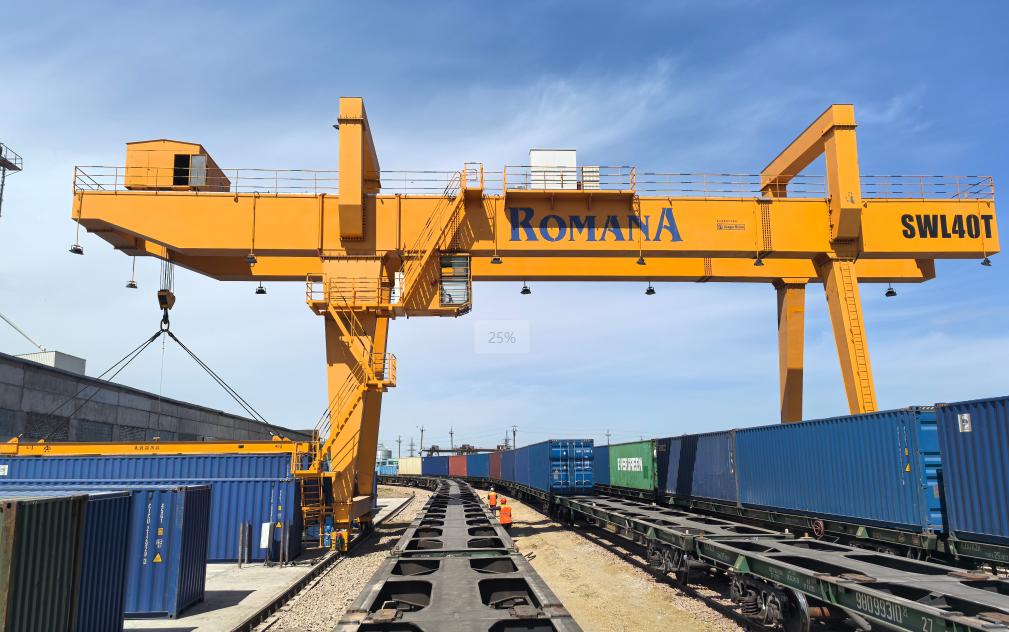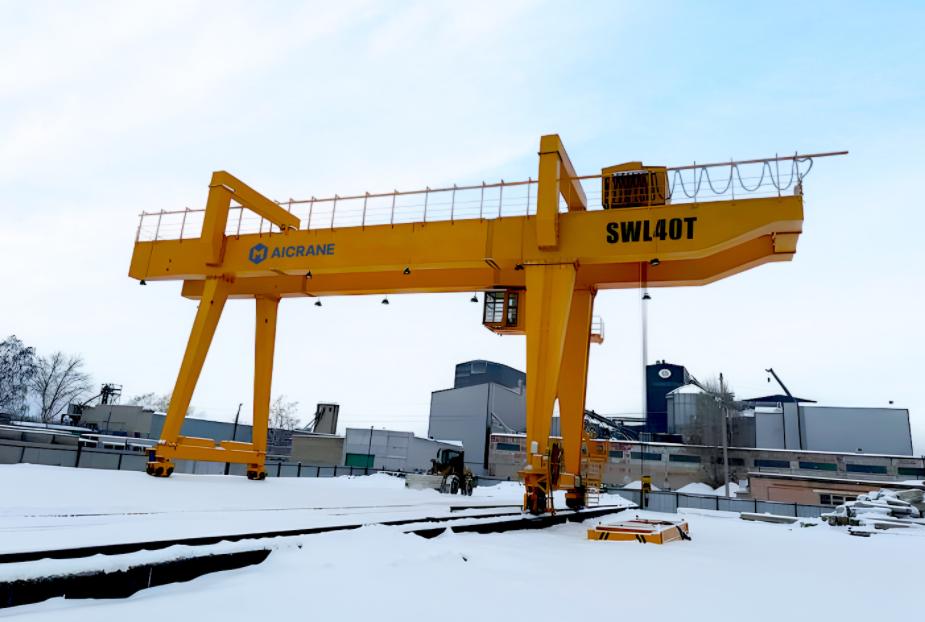How Smart Control Systems Improve 40 Ton Gantry Crane Performance
In today’s fast-evolving industrial landscape, material handling solutions must offer more than just brute strength - they must also deliver precision, efficiency, safety, and adaptability. One such area where technology is making significant strides is in gantry crane systems, particularly the 40-ton gantry crane category used across ports, rail yards, precast yards, construction sites, and heavy manufacturing industries. At the heart of this evolution lies the integration of smart control systems, which are redefining how these powerful cranes operate.
In this article, we explore how smart control systems improve the performance of 40 ton gantry cranes by enhancing operational efficiency, safety, energy management, diagnostics, and overall productivity.

1. What Are Smart Control Systems in Gantry Cranes?
Smart control systems in gantry cranes refer to an integrated set of sensors, software, control panels, and remote communication capabilities that automate and optimize crane operations. These systems can include technologies such as:
- Programmable Logic Controllers (PLC)
- Human-Machine Interfaces (HMI)
- Anti-sway control systems
- Load monitoring sensors
- Remote diagnostics and monitoring
- Auto-positioning and path memory
- Collision avoidance systems
- Energy feedback and power consumption tracking
For a 40-ton gantry crane, the application of such smart systems brings transformational benefits compared to traditional manual or semi-automatic operations.
2. Enhancing Operational Precision and Efficiency
One of the most obvious benefits of smart control systems is the precision in handling heavy loads. A 40-ton crane is often used to lift bulky and expensive items such as concrete beams, steel coils, containers, or large machinery. Manual handling of such items is time-consuming and prone to human error.
Smart control systems offer:
- Auto-positioning and route memory: The crane can be programmed to remember specific pick-up and drop-off points. This reduces the need for repeated manual alignment and increases throughput.
- Synchronized movement: For dual hoist or dual trolley systems, smart controllers ensure synchronized lifting, preventing load imbalance or rotation.
- Real-time load feedback: Load cells and sensors continuously monitor the weight, helping operators stay within safe working loads and avoid structural damage.
The result is faster and more consistent cycle times, which boosts productivity significantly over time.
3. Improved Safety and Collision Avoidance
Safety is paramount when operating a 40-ton gantry crane. Mishandling or collisions can lead to severe injuries, equipment damage, and operational downtime.
Smart control systems help mitigate these risks through:
- Anti-sway technology: When moving a heavy load at height, it naturally sways. Anti-sway systems stabilize the load using mathematical algorithms and motor speed adjustments, making movements more controlled and predictable.
- Obstacle and zone detection: Laser or radar-based sensors can identify nearby objects or people in the crane's path. The crane can then slow down, stop, or reroute accordingly.
- Programmable limit switches: These prevent the crane from over-traveling or lifting beyond its rated height or capacity.
- Remote monitoring and alerts: Operators and safety officers can receive real-time alerts on system anomalies, overloads, or unsafe conditions through HMIs or mobile apps.
Together, these innovations drastically reduce the risk of accidents and allow for safer operations in busy or confined environments.

4. Energy Optimization and Cost Savings
Smart control systems are not only about safety and precision - they also help in reducing operational costs, especially when it comes to energy consumption.
Energy-efficient features include:
- Regenerative braking: When lowering a load, the motor acts as a generator and feeds energy back into the system or power grid, reducing electricity bills.
- Idle mode management: The system powers down components when not in use to save energy.
- Optimized motor control: Frequency converters and smart drives adjust the motor speed based on load weight and task, reducing energy wastage and motor wear.
- Real-time energy monitoring: Operators can view energy usage trends and plan shifts accordingly to balance peak demand periods.
These savings can be substantial for companies that run cranes continuously throughout the day.
5. Predictive Maintenance and Diagnostics
Unplanned downtime is one of the costliest issues in heavy-duty crane operations. Smart control systems significantly improve crane reliability and availability through predictive maintenance tools.
- Condition monitoring: Sensors detect anomalies in motor temperature, hoist brake wear, gearbox vibrations, etc., alerting operators before a breakdown occurs.
- Maintenance reminders: Based on usage cycles and load data, the system can generate service alerts and inspection schedules.
- Remote diagnostics: Engineers can access crane data remotely to troubleshoot issues without physically visiting the site, minimizing downtime.
- Data logs and history: A complete operational history is recorded, making it easier to identify recurring issues or verify compliance with safety regulations.
This proactive approach leads to longer equipment life and lower maintenance costs.
6. Remote Operation and Integration with Facility Management Systems
Many modern 40-ton gantry cranes can be integrated into plant-wide or yard-wide management systems, allowing for centralized control and data sharing. This enables:
- Remote operation: Operators can control the crane from a cabin, control room, or even off-site using secure wireless connections.
- Fleet coordination: If multiple cranes are used, smart systems can coordinate movements to avoid traffic and collisions.
- Integration with ERP/WMS: The crane's operations can be linked with enterprise resource planning (ERP) or warehouse management systems (WMS) for better scheduling, inventory management, and reporting.
Such integration streamlines operations and supports Industry 4.0 initiatives, making businesses more agile and competitive.
7. Real-World Applications
Aicrane’s 40-ton gantry cranes, for example, have been successfully deployed in steel handling, concrete beam transportation, wind turbine assembly, and shipyard logistics. In many of these applications, customers have opted for smart control features to:
- Reduce labor costs
- Improve lifting accuracy
- Enable around-the-clock remote operations
- Minimize downtime through predictive alerts
These smart upgrades have helped businesses scale operations without compromising on quality or safety.
Conclusion: A Smarter, Safer, and More Efficient Future
As industries move toward greater automation and digitalization, smart control systems in gantry cranes are becoming the new standard—not just a premium feature. For a 40-ton gantry crane, which sits at the mid-to-heavy lifting category, smart controls offer a powerful combination of safety, efficiency, cost control, and operational flexibility.
Whether you're upgrading an existing system or purchasing a new crane, considering smart control systems is no longer optional - it’s a strategic investment in long-term performance and profitability.
At Aicrane, we offer tailored gantry crane solutions equipped with advanced smart control systems to meet your specific project needs. Contact us today to learn how our intelligent cranes can enhance your material handling operations.